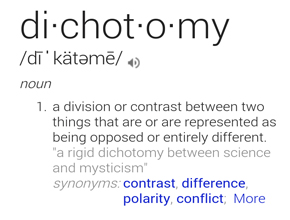Critical State – Debts Get Called
Imagine, if you will, that it is a nice harvest day in late August. The combines are serviced and running, warming up to head to the field. You’re in the house grabbing a quick bite and filling your water jug before embarking on what looks like a long afternoon of harvesting. The phone rings, it’s the bank. They tell you they’ve made the decision to reduce their market exposure in ag lending in your area, and that you’ve got 30 days to “find a new lender.”
While I hope this is an imaginary situation for most of you, it is a true story for a client of mine from my banking days. It wasn’t my bank that “de-marketed” them; that happened years earlier, but it left a sour taste in their mouth. They had cash flow challenges like almost all grain farms did coming out of the 90’s, but their file was not at risk of going south. There was no indication in the previous weeks or months that their loans may get called, so you could only imagine the shock, the disappointment, and the anger at getting that type of phone call at the beginning of harvest. How could they find the time to seek a new lender when the combines had to roll?
Here are some terms that borrowers need to understand:
- Demand Loan: this is a loan that provides the lender with the right and opportunity to demand full repayment of the loan at anytime. While there still may be time remaining on the loan term, notice of demand to repay the full balance is an option the lender can exercise.
Structuring your borrowing to include no demand loans does not guarantee that you wouldn’t face a situation as described above. Demand loans are typically listed as a current liability in your financial statements which makes your working capital look offside. - Effective Annual Interest Rate: interest payment terms, specifically interest compounding periods, affect the actual dollar amount of interest you pay on a loan. Interest that is compounded more frequently will cost more than less frequently (this also applies to your interest bearing investments: more frequent compounding pays you more interest and vice versa.) Lenders are required to calculate and disclose the annual effective rate so that borrowers can have a standardized figure to compare.
Consider 5% interest compounded semi-annually; the effective annual rate is 5.0625%. Consider 5% compounded quarterly, and the annual effective rate becomes 5.09453%. The difference between the posted 5% and the annual effective rate in these two examples is the compounding interest. - Covenants: as the term implies, covenants form part of the binding agreement between you and your lender. Breaching a covenant could put your total borrowing at risk of being demanded by your lender. Covenants can be for anything from minimal financial metrics to submitting financial reporting. Sluffing these off will hurt your lending relationship.
Direct Questions
What information do you require from your lender to give you more knowledge and comfort?
How are you being proactive in managing your relationships with your lenders?
From the Home Quarter
Receiving notice that your debts have been called instantly puts your business at critical state. While having an excellent relationship with your lender does not guarantee that you won’t be the victim of a corporate de-marketing decision (like my former clients above,) it will put you at the top of the list of clients to keep if there is ever a culling program initiated by bank HQ.











Leave a Reply
Want to join the discussion?Feel free to contribute!